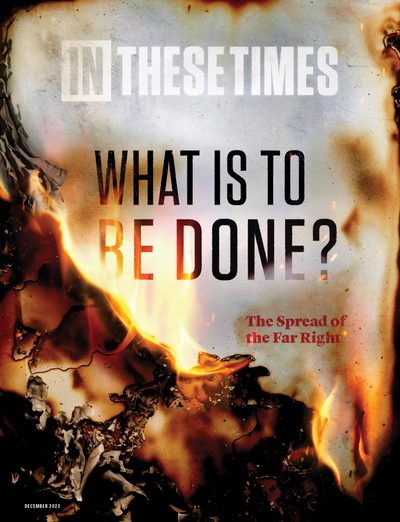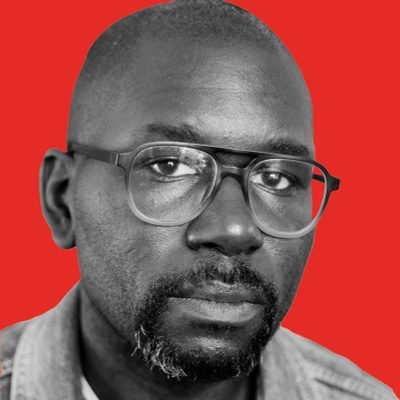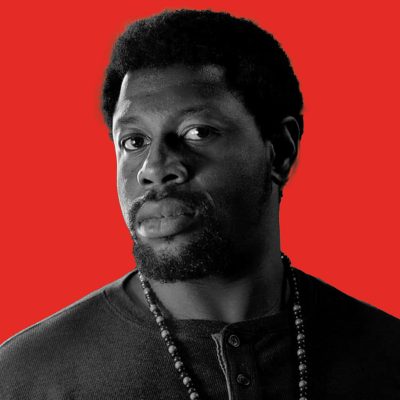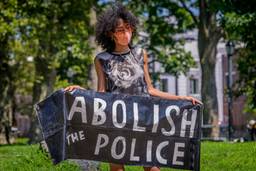The Right is Prepared For This Moment. Are We?
A conversation between Jamelle Bouie, Alex Han, Nancy MacLean, Tarso Luís Ramos and Olúfẹ́mi O. Táíwò on the Left’s role in fighting the Right.
Jamelle Bouie, Alex Han, Nancy MacLean, Tarso Luís Ramos and Olúfẹ́mi O. Táíwò
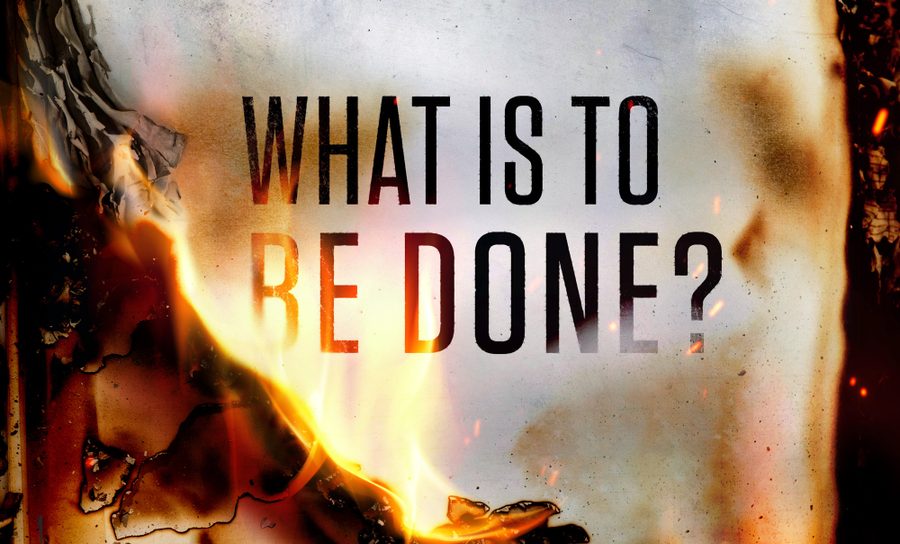
When In These Times decided, earlier this year, to publish a special issue on the Right, Republicans had not yet elected an avowed Christian nationalist as speaker of the House — one who was a key architect of Donald Trump’s efforts to overturn the 2020 election, who had partnered with a “conversion therapy” group to launch an annual anti-LGBTQ protest in public schools, who calls democracy “two wolves and a sheep deciding what’s for dinner,” and who, in the first moments of his speakership, declared God had “ordained” his authority.
Tennessee hadn’t yet watched a mayoral candidate arrive to a candidate forum under the escort of self-described neo-Nazis. Republicans hadn’t made a martyr of the man who strangled to death a homeless street performer on New York City’s F train. Municipal governments weren’t proposing to criminalize driving on their roads to obtain abortions out of state. Many fewer books had been banned. Texas hadn’t laced the Rio Grande with razor wire. Idaho wasn’t hemorrhaging OB-GYNs.
That deeply incomplete accounting may be shocking, but for anyone who’s paid attention to the Right over the past three, seven or 20 years, it shouldn’t be a surprise; the Right has been laying the groundwork for these horrors for years. Whether people are paying attention, or enough attention, is another question.
That’s why ITT is publishing this special issue. Because the situation already is dire enough, but next year’s election promises a race to the bottom. It’s not neoliberal hysteria to say that Trump winning the presidency in 2024 could be the nail in the coffin of American democracy; the Right, led by the Heritage Foundation, has already published its blueprints with pride. Even if Trump doesn’t win, half the country already lives under an effectively separate Constitution with sharply curtailed rights.
So what do we do? How do we fight back? We asked some of the smartest people we know.
—KATHRYN JOYCE, ISSUE EDITOR
How do you see the right wing today? Is it different from five or 10 years ago?
NANCY MACLEAN: As dangerous as the Right was 10 years ago, it’s infinitely more dangerous now. They have captured one of the country’s two major parties and turned it against the factual universe and toward authoritarianism. One of the most troubling developments is the willingness of corporate donors — particularly in the fossil fuel sector — to rely on Christian nationalists to power their agenda. We’re seeing that all around the country, in really dangerous new ways — intimidation at community-level institutions from public health to election administration and schools — that are beyond anything we’ve seen since the attacks on the civil rights movement. It’s a really serious situation.
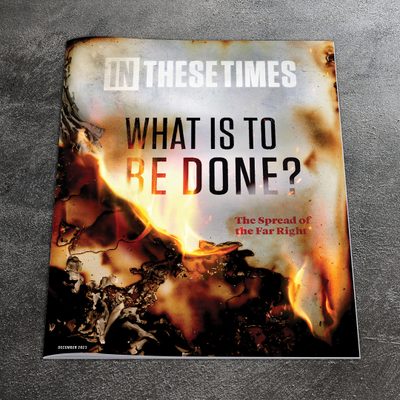
JAMELLE BOUIE: I would add that today’s Right has a much more explicitly authoritarian orientation than we’ve previously seen from the mainstream Right. It’s basically, “How can we take the administrative state and weaponize it against our political and cultural enemies?” That’s the signal effort of right-wing groups like the Heritage Foundation with regards to the prospect of a second Trump administration. That’s distinctive. It’s not as if the Tea Party-era conservative movement was especially pro-democracy, but it presented itself as representing the people who’d been underrepresented in the institutions. And as recently as 15 years ago, Republicans talked about winning national majorities. You don’t hear that talk anymore. Today’s Right is almost openly contemptuous of the idea of popular legitimacy. Everywhere you look, extremely rightwing state Republican parties are looking for every avenue to either remove voters’ power or make it essentially impossible for voters to remove them from office.
TARSO LUÍS RAMOS: I spent decades disabusing people of the idea that the Right was all one thing — that they all had the same agenda, that they were all Nazis, they were all Christian Right. And there continue to be important distinctions that we better figure out how to wedge. However, key institutions are now working in lockstep at a scale I have not seen in the 35 years I’ve been doing this. It’s a coalition whose various partners have somewhat different endgames for the society they wish to govern. But they’re united in the conclusion that they can only enact their agenda by means of minority rule. I suppose they’ll fight it out amongst themselves what sort of authoritarians they’ll be: more openly white supremacist, more theocratic, more corporate-dominated?
ALEX HAN: The different alignments that exist inside the Right — the openly white nationalist bent, the question around women’s bodily autonomy, the attacks on trans youth — all those things used to be subordinate to whatever the driving force behind the bloc was — corporatist or Christian Right. But all those things are so nakedly out there right now.
TARSO LUÍS RAMOS: It’s also important to recognize there’s less standing in their way. The relative strength of progressive to centrist forces, the hollowing out of Democrats’ liberal tradition into neoliberalism, the willingness to make concessions to white supremacy — there’s just less in their way. This is true in the international arena as well, with a rising global axis of right-wing authoritarian states and not even the pretense of a counterweight. There is nothing in the international scene to block the United States from going in an increasingly authoritarian direction.
Well, why is the Right winning?
NANCY MACLEAN: On issue after issue, progressives have built national majorities, whether on climate, taxing billionaires or women’s reproductive rights. Yet we’re losing. How?
Well, they’ve been working at this for over 50 years, lining up the institutional infrastructure, hamstringing labor unions — particularly public sector unions, which lobby for all kinds of progressive goods — and capturing governments in 28 states to ram through massive voter suppression and the most sophisticated gerrymandering we’ve ever seen.
But the other thing the Right did that was so strategic was not to take the courts for granted. They began a project in the 1970s of court capture and constitutional transformation. And we see the success of that in the Supreme Court now with Dobbs, the decisions against environmental policy, the incredible pro-corporate decisions, ending affirmative action…
We’re losing on so many fronts not because our ideas are bad, and not because we don’t have majority backing, but because we have allowed the rules to be rigged to such a point that it’s very hard to defend even past gains, much less advance a new progressive agenda.
JAMELLE BOUIE: I’m going to mildly disagree — like a-mild-sauce-at-Taco-Bell disagree. It’s undeniable that the Right has a Supreme Court supermajority and that it’s been able, in some states, to create laboratories of autocracy. But from another perspective, this is all a reaction to the Right’s consistent inability to muster popular majorities for their agenda. A political movement that decides to target the judiciary is a political movement trying to burrow itself into the least responsive parts of the political system, and which is actually quite vulnerable to political defeat.
Not for nothing, if Biden only serves one term, he will have appointed more people to the entire federal judiciary than Trump did. If he serves two, then pull back and look at 16 years of two nonconsecutive, eight-year Democratic presidents appointing judges. That’s a different picture than right-wing victory.
There are real right-wing successes, especially on the very local level, but also significant pushback on that same level. The efforts to ban abortion have basically thrown the pro-life movement into crisis.
My sense is that the political Right has real power and influence, but it’s highly contested throughout every level of American political life. And that helps explain the virulence of the Right in this moment. If you read these people on the regular, you see this apocalyptic sense that they’re living in a last-gasp attempt to win some final victory. That’s not the posture of a movement that thinks it’s winning. It’s the posture of a movement that thinks if it doesn’t do this, it’s done for the duration.
NANCY MACLEAN: I agree. The Right’s desperation is a measure of significant Left advance over so many issues. I would add that I’ve never seen the Left as seriously committed to electoral work in my lifetime. And progressives are waging a fight for the soul of the Democratic Party. So we have to keep both sides in view. We have tremendous potential on the Left side, which helps explain why the Right is talking about the end of the republic and “this is the last time we can win by nonviolence.”
Why should the Left care about the Right, and does it? Historically, there’s a sense that the Left has a responsibility to fight fascism and authoritarianism. Is it still showing up for that fight?
OLÚFẸ́MI O. TÁÍWÒ: This probably differs issue to issue, but generally I’ve thought the Left’s role is to exert pressure on the center. To use Cop City as an example, while we would like people to have a leftist, anti-capitalist critique, all it would require to get liberals in the game is for them to believe themselves. I don’t think it’s necessary for the Left to unmask the various right-wing assholes we know are behind a project like Cop City. Getting the Stacey Abramses of the world off the fence is sufficient.
Many of the political fights we’re facing have something like this character. The fight about critical race theory, about who can be on which teams in schools — we are not, in those fights, in the territory where you need to be a leftist to understand what position is against the Right.
NANCY MACLEAN: That reminds me of something David Roediger once said: that the tragedy of the Left in the U.S. is that it doesn’t get to be a Left, because it always has to step in and become the liberal presence at moments like what you’re describing, or embolden liberals to stand for values they should be standing for.
ALEX HAN: Cop City really exhibits the neoliberal, center-to-far-right alliance that has defined so much of the last 50 years. In Chicago, our last mayor’s race was largely the progressive Left versus an alliance of MAGA forces and center Democrats. That’s what we see in Cop City as well: Atlanta’s Democratic city structure working with every bad actor in the country to accomplish right-wing goals.
I was in the Tamiment Library labor archives at NYU last week, and was surrounded by the archives of the Abraham Lincoln Brigade — American volunteers, most of them Communist, who traveled to Europe to fight the fascists during the Spanish Civil War. It’s a reminder, from a different moment, of the Left’s traditional role vis a vis an authoritarian political Right, which is to lead the anti-fascist front. The fight of the UAW against the Big Three is in its own way a front against a different variety of fascism and authoritarianism.
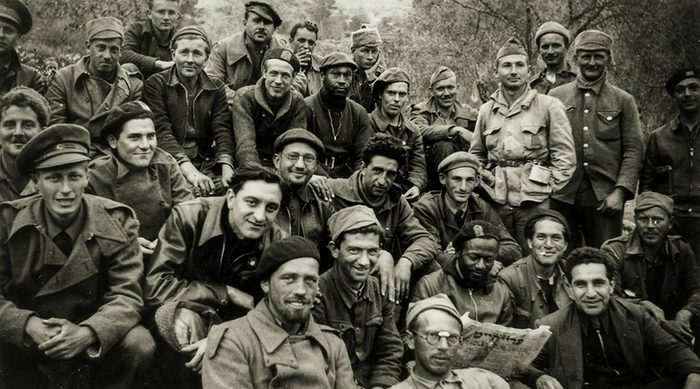
TARSO LUÍS RAMOS: The Right stands for racial, religious, gender and economic hierarchy, for the unregulated capitalist plunder of the planet and the commodification of all human interactions. So why does the Left need to care? Because the Left needs to stand for human freedom, equality, solidarity. Much of what the Right stands for destroys the possibility of humanity.
Does the Left care about the Right? That’s an interesting question.
There’s a tendency to think about the struggle for power in the United States as a two-sided fight, with the Left standing with the people against concentrated government and corporate power. But at the minimum, we have a three-sided fight. On the third side are very powerful right-wing forces, also contesting for power with the state and with capitalism. And they’re contesting the Left for a social base, sometimes attacking the Left explicitly and violently.
As Alex pointed out, 75 years ago there was a much deeper understanding on the Left of authoritarianism and fascism. I’ve had very few conversations in recent years where leftist and progressive organizers volunteered a gender analysis of authoritarianism. Even though, if we look back at the Frankfurt School’s work on authoritarian personality, which sought to explain the “Good German” phenomenon, we know that appeals to gender hierarchy justify not only strong-man leadership, but a violently hierarchical order that appeals to people who are willing to be dominated, as long as they understand their place in the social order and get to dominate others. So, is the Left exercising leadership in understanding the Right and leading the fight against it?
NANCY MACLEAN: There are people in our and other countries writing about this. Lots of feminists have been on this beat. So it’s there, but many organizations haven’t incorporated it into their understanding. And some of that has to do, frankly, with white men on the Left who never got over the eclipse of Students for a Democratic Society by radical African American activists and feminists, who have this notion of class politics versus identity politics that will be the death of us all in a world that is both/and, not either/or. But it’s important to recognize that those feminist analyses are out there. It’s just a question of who gets the mic.
TARSO LUÍS RAMOS: I agree the analysis is there, but it’s not informing the Left’s strategy. Even though in any country that has mounted mass mobilizations against authoritarian regimes, whether it’s Iran, Brazil or Belarus, women and femme fronts have been front and center. Yet it hasn’t emerged as a strategic imperative for the U.S. Left to figure this out?
The U.S. Left can be incoherent with respect to its own agency. Sometimes it imagines it has much more power than it actually has, like we’re one crisis away from a fundamental socialist breakthrough. Sometimes it imagines we have zero power and are being dragged around like a rag doll by Democrats, so let’s focus on complaining about how the Democratic Party isn’t advancing working-class interests, as though it was anything more than a donors’ club.
OLÚFẸ́MI O. TÁÍWÒ:There are a lot of failures of analysis on the Left, and they don’t do us any favors when we’re thinking strategically about which political movements to link with in mass-movement politics.
But I also wonder if our problem is even more basic than that: just a sheer imbalance of practical capacity. The National Furry Convention is an order of magnitude larger than the DSA convention. There’s not a lot of us! We represent the people that don’t have the money. And we don’t have a shadowy cabal of billionaires to make up for the lack of majority alignment with our views in the way the Right makes up for it with dollars.
We need a practical answer to that. The Right has a whole ecosystem of talk radio. We have great publications like this one, but I’d love to see the readership and viewership of orgs like In These Times an order of magnitude larger than it is. To get there, we have to find a posture toward the center-left that is something other than disdain — as wrong as they may be on the issues. But more centrally, we need a set of communication and recruitment infrastructures that can compete with the Right.
What would a broad front to fight the Right look like?
ALEX HAN: It’s hard to learn lessons from local politics, but I think the Chicago mayor’s race was the first time an electoral coalition was led by Left institutions — particularly the Chicago Teachers Union, but an array of others that took on leadership. I really don’t think there’s another example in modern American history. So it’s a question of where does infrastructure exist to create a winning coalition.
Many of us on the Left are going to have to get out of a mode of disliking the people who are closest to us in the sharpest way. We need a real power analysis: What are the institutional forces in our political space that can actually lead? The excitement in and around the labor movement goes unstated a lot of the time, but the question isn’t whether a particular contract fight or organizing campaign will win. The subtext is: Can these institutions and groupings build enough power to help build a bigger movement that can actually provide meaningful structural gains?
NANCY MACLEAN: It’s also important to think about where the vulnerabilities are on the other side and how their coalition might be fractured. This is a place where there was significant difference between liberals and the Left during the Trump administration. There was a real push from some liberal think tanks to orient toward Republican Never Trumpers and avoid broader critique.
We saw that play out with the January 6 hearings too. Liz Cheney’s commitment to the project was hugely important, but she charged a price: to not talk about the other Republicans who enabled Trump and fed into the plot to overthrow the will of the voters.
It’s become clear the Never Trumper strategy only ever pulled aside a few people, though it raised a ton of money for the groups that were part of it. In the meantime, a lot of work needed to be done, which wasn’t, to show the impact of this radical-right agenda on people’s lives. That would be a more effective way to fracture the coalition and realign a critical mass of voters, maybe even some industries.
JAMELLE BOUIE: It’s not a given that the center-left is going to look to its right for partners. I might have a more positive feeling toward the Biden administration than some people on the Left, but I actually think it’s a good example of how these things are contestable and how a strategy, at least among congressional progressives, of trying to be reliable working partners, has paid dividends in ways you may not expect, like the extent to which the Biden administration continued to look for ways to pursue climate policy.
OLÚFẸ́MI O. TÁÍWÒ: It’s worth remembering that we are a weird breed, in thinking about politics all the time. Politics has a much more minor role in most people’s lives. And while a lot of people express support for either party, or what sounds to us like milquetoast liberal opinions, they would be open to other perspectives if given concrete proposals about how to get involved beyond just casting a ballot every couple of years.
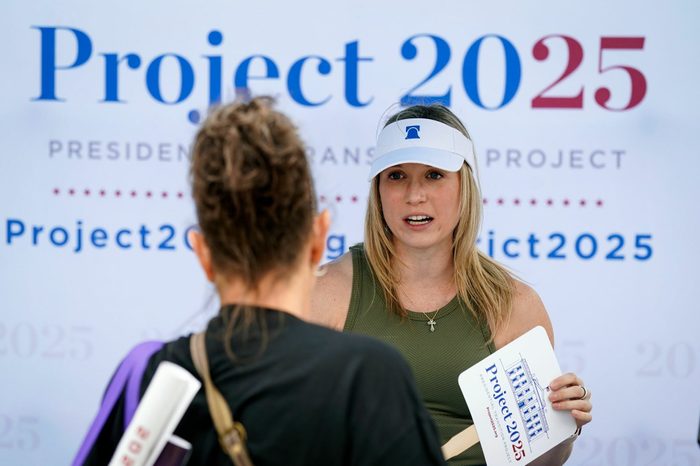
I think back to 2017, when Trump talked about banning Muslims and thousands of people streamed to whatever airport they could get to, because there’s a long history of teaching people that how you effect change is you stand somewhere in public and hold a sign. I have nothing against protests. But people felt moved to do something, and they did the thing that occurred to them as a way of showing support. They did the same thing three years later after the murders of George Floyd and Breonna Taylor.
There’s going to come a time — I think actually pretty soon, given the way the UAW is moving — where people are going to realize there are other things to do beyond just expressing disagreement with what the government is up to. The question is, who is going to get that message out first and loudest? Is it going to be the center-left saying, “You can also sign a MoveOn.org petition,” or is it going to be us saying, “Join this union, walk that picket line”?
When the Right talks to its base, they talk to them as soldiers. We too often talk to our party faithful as scholars or pundits, or—
NANCY MACLEAN: ATMs.
OLÚFẸ́MI O. TÁÍWÒ: Yeah. Honestly.
NANCY MACLEAN: I mean, of all those “digital organizing” emails, maybe one in a hundred are about “take this action,” “be part of this.” And if there is anything like that, it instantly goes to the donate button. Maybe it works, but it’s also burning a lot of turf. We all know we’re being played for suckers when we sign an online petition now.
TARSO LUÍS RAMOS: A broad front against fascism and authoritarianism should run the gamut from antifa on the street to anti-Trump generals, with a growing role for mass organizations on the Left. One way the Left can play an outsized role, even as a less powerful force, is by providing accurate and consistent assessments of the balance of forces, along with strategic guidance for defeating the authoritarian bloc. Because the power of denialism is so strong, many forces within the Democratic Party just want to get back to making little neoliberal adjustments and calling it progress. Very few want to admit that we’re dealing with authoritarianism. A Left program for defeating the Right can and should carry the day.
Of course, strategic clarity is insufficient. To supplant the authoritarian program, the Left also needs to build organizational and political and cultural capacity with masses of working people. It’s not just a question of building the broad front that keeps the worst things from happening, and then going back to a politics that crushes our people slowly rather than quickly.
Lastly, the combination of rising political instability and violence and the Right’s state-level capture means we are likely to find ourselves in a protracted struggle with racialized authoritarianism, regardless of who’s holding the White House. That’s going to require a lot of strategic shifts. Most of us were not organizing during Jim Crow, or when abortion was illegal in most of the country. Figuring out how to deal with substantial authoritarian-occupied territory will profoundly shift how we build power.
NANCY MACLEAN: I appreciate your language of occupied territories, Tarso. I live in North Carolina. Life is very different for those of us behind the red curtain. Things are getting very dire.
How should we think about the Right’s claims of a political realignment, and that they now represent the working class?
NANCY MACLEAN: We should stop treating it as a new thing. My first book was about the Ku Klux Klan in the 1920s. It was all about reactionary populism, with many of the inflections we’re seeing now. Then, the “elites” were under attack for being open to reforming the brutal Jim Crow system in the South. Liberal clergy were attacked as cultural elites. That was a feature of interwar fascism too: attacking “liberal elites” and ideas that came with the Enlightenment. This goes so, so far back.
We’re seeing a new iteration of something old, which is all about attacking reforms that would make the country a more egalitarian place, and nothing about supporting workers or attacking corporations (except now the attacks on some corporations for supporting environmental or diversity programs). But it’s gotten more traction with white people of different classes, and even some Latinos, because of the years of neoliberal policy that shattered the labor movement and the role that unions had in insulating not all, but many, white men from embracing this kind of politics.
The more we recognize this as having very deep roots, the better off we’ll be.
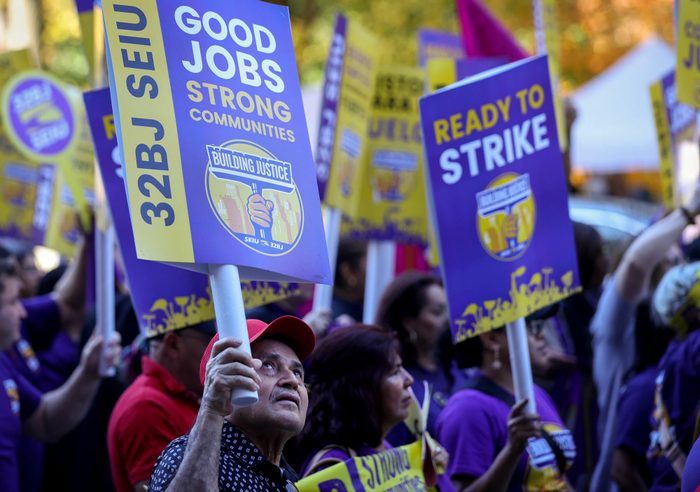
JAMELLE BOUIE: It is absolutely the case that right-wing populism has deep roots in American society, and the current situation grows out of a long tradition.
But so much of the right-wing populist message seems tied specifically to Donald Trump, and other politicians who attempt to do it can’t figure it out. Maybe this relates back to my previous view that the political landscape is more contested than it looks. Even with real changes in the electorate — specifically Trump’s inroads with working-class men of color — it’s worth considering the extent to which that is a Trump-specific phenomena. I don’t know what that means post-Trump — assuming there’s a post-Trump moment.
OLÚFẸ́MI O. TÁÍWÒ: It is really difficult to know what the lesson is from Trump. I was listening to rappers reference Trump in the ’90s. He was in Home Alone 2. He was in WWE — he smeared shaving cream on Vince McMahon’s head for some reason. He did a thing that, like Jamelle said, cashed in on his pre-political history. I wouldn’t say Trump’s charisma is singular, but there’s a formula there that other people — Ron DeSantis or Greg Abbott — might not be able to cash in on.
But I’m inclined to agree with Nancy. This is a long set of right-wing tactics that’s less a coherent strategy than a set of malleable recruitment tactics. And I don’t think there’s much for the Left to do other than realize we’re competing for the silent middle. Either unions and the institutions we’re about will win those people over, or they will. I think that’s the question, rather than “is this fascism? is this sparkling Bonapartism?” It’s a question of who will win those numbers and how quickly.
TARSO LUÍS RAMOS: There is malleability for sure. There’s also reaping the benefits of having animated entirely new populations into U.S. politics, going back 40 or 50 years, then very patiently building the federated alliances that allow for synergy now. It looks and sounds incoherent, but it makes sense to those being mobilized, who have grown into a bloc of 40 million people.
There’s a Left sensibility of not wanting to take these kinds of politics seriously. There is still a strong tendency to think the government’s primary responsibility is just delivering economic benefits. I certainly don’t take issue with the need to do that, but it will not be enough.
If we don’t define our project in terms of who we are as a people at a moment when that’s what’s being contested — like, who’s the people who deserve the stuff — then we’re not likely to win. Not in the near term. Or if we “win” because people are just too scared of what Trump represents, that’s not a power-building path. We can’t just wait for the implosion of authoritarianism’s most charismatic operative. The Left needs to really grapple with the terrain of culture war. We don’t want to fight within our opposition’s frame. But what is our answer at the level of identity, of belonging? What do we stand for? Who’s the “we” that stands for it?
ALEX HAN: The Right’s definition of populism is calcified — overwhelmingly (though not exclusively) white and male, with a class character that is aesthetically “working class” but is, in reality, dominated by the relatively wealthy.
We’ve seen how a multiracial, multi-gender populism of the Left could exist. Part of the issue is our ability to define what that populism looks like, and not just a cosplay, two-dimensional version of it. At moments like the 2020 racial justice uprising, we’ve seen glimmers of it. Or in this year’s strikes by autoworkers, healthcare workers, screenwriters, actors and so many others. Or in the campaigns to save abortion rights in states like Kansas and Ohio. These give shape to the kind of populism we need to win. We are the majority, and those who seek to take away our rights are the elite minority. And we need to express ourselves as a majoritarian project in order to win.
Jamelle Bouie is a columnist at the New York Times and cohost of the podcast Unclear and Present Danger.
Alex Han is Executive Director of In These Times. He has organized with unions, in the community, and in progressive politics for two decades. In addition to serving as Midwest Political Director for Bernie 2020, he’s worked to amplify the power of community and labor organizations at Bargaining for the Common Good, served as a Vice President of SEIU Healthcare Illinois and Indiana for over a decade, and helped to found United Working Families, an independent political organization in Illinois that has elected dozens of working-class leaders to city, state and federal office. Most recently he was executive editor of Convergence Magazine.
Nancy MacLean is the William H. Chafe Professor of History and Public Policy at Duke University and author of Democracy in Chains, a National Book Award finalist just republished with a new preface that updates it to the present.
Tarso Luís Ramos is executive director of Political Research Associates.
Olúfẹ́mi O. Táíwò is associate professor of philosophy at Georgetown University and author of Reconsidering Reparations and Elite Capture: How the Powerful Took Over Identity Politics (And Everything Else).
